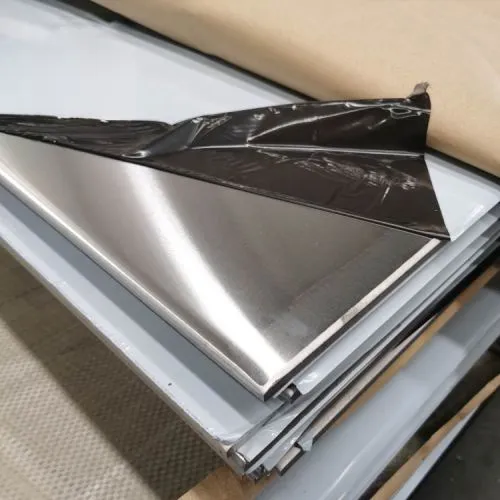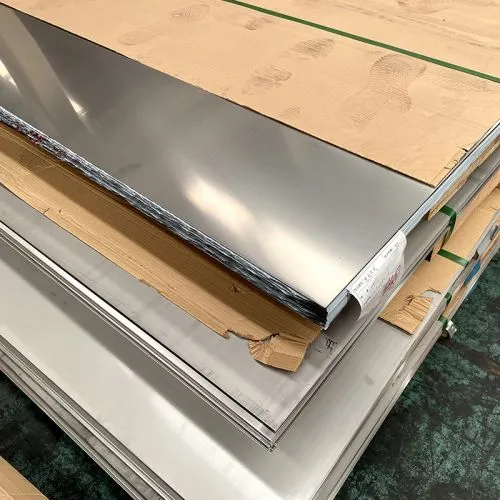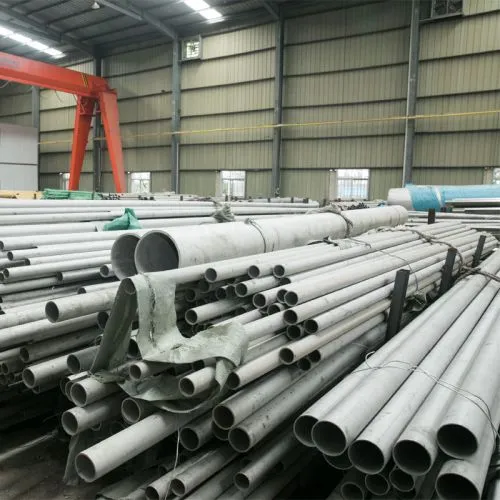Composition and Characteristics
The superior performance of 316L stainless steel is due to its carefully balanced chemical composition, which typically includes:
Chromium (Cr):16-18%
Nickel (Ni):10-14%
Molybdenum (Mo):2-3%
Carbon (C):0.03% max
Manganese (Mn):2% max
Silicon (Si):1% max
Phosphorus (P):0.045% max
Sulfur (S):0.03% max
The addition of molybdenum significantly enhances the alloy’s resistance to pitting and crevice corrosion, particularly in chloride-rich environments such as seawater. The low carbon content helps prevent carbide precipitation during welding, ensuring that the material maintains its corrosion resistance and strength without requiring post-weld annealing.
Key Properties
316L stainless steel bar is prized for several key properties that make it an excellent choice for a wide range of applications:
Superior Corrosion Resistance:316L stainless steel offers exceptional resistance to a variety of corrosive environments, including those with exposure to chlorides, acids, and alkalis. This makes it ideal for use in marine, chemical, and pharmaceutical industries.
Enhanced Weldability:The low carbon content of 316L stainless steel minimizes the risk of carbide precipitation during welding, reducing the likelihood of intergranular corrosion and ensuring high-quality, durable welds.
High Strength and Durability:316L stainless steel maintains excellent mechanical properties, including high tensile strength and toughness, even in harsh conditions. This ensures that components made from 316L stainless steel can withstand heavy loads and resist wear over time.
Non-Magnetic in Annealed Condition:Like other austenitic stainless steels, 316L is non-magnetic when annealed, which can be beneficial in certain applications where magnetism is undesirable.
Aesthetic Appeal:The smooth, polished finish of 316L stainless steel provides an attractive appearance, making it suitable for both functional and decorative applications.
Applications of 316L Stainless Steel Bar
316L stainless steel bar is widely used across various industries due to its excellent properties. Common applications include:
Marine and Coastal Environments:316L stainless steel is ideal for marine applications such as boat fittings, fasteners, and structural components due to its resistance to seawater corrosion.
Chemical Processing:The material is extensively used in chemical processing equipment, including tanks, valves, and piping systems, where exposure to corrosive chemicals is frequent.
Medical Devices and Implants:316L stainless steel’s biocompatibility and resistance to corrosion make it a preferred choice for surgical instruments, medical implants, and other healthcare applications.
Food and Beverage Industry:The alloy is used in food processing equipment, kitchen appliances, and storage tanks due to its resistance to food acids and its non-reactive surface, ensuring compliance with health and safety standards.
Architectural and Structural Applications:316L stainless steel is employed in architectural components, handrails, and other structural elements where both strength and corrosion resistance are required.
Advantages of Choosing 316L Stainless Steel Bar
When selecting a material for your project, 316L stainless steel bar offers several compelling advantages:
Exceptional Corrosion Resistance:The combination of chromium, nickel, and molybdenum ensures that 316L stainless steel performs exceptionally well in corrosive environments, reducing the risk of material degradation and extending the lifespan of your products.
Versatility:316L stainless steel’s ability to perform well in a wide range of environments and applications makes it one of the most versatile materials available.
Reliability:Known for its consistent performance, 316L stainless steel ensures long-lasting durability and resistance to corrosion, even in demanding conditions.
Ease of Fabrication:The material’s excellent formability and weldability allow for easy fabrication, reducing manufacturing costs and increasing efficiency.
Conclusion
316L stainless steel bar is a premium material that offers an exceptional balance of corrosion resistance, strength, and durability. Whether you are working on marine applications, chemical processing equipment, or medical devices, 316L stainless steel bar provides the reliability and performance you need to achieve the best results. Explore our selection of 316L stainless steel bars today and find the perfect solution for your next project.
Common surfaces

Stainless Steel Standards Comparison Table
| STS | USA | UNS | CHINA | EURONORM | RUSSIA | SWEDISH | JAPANESE | |
|---|---|---|---|---|---|---|---|---|
| GRADE | AISI/ASTM | NO | GB | NO | NAME | GOST | SS | JIS |
| 201 | 201 | S20100 | 12Cr17Mn6Ni5N | 1.4372 | - | - | - | SUS 201 |
| 301 | 301 | S30100 | 12Cr17Ni7 | 1.4310 | X 12 CrNi 17 7 | - | 2331 | SUS 301 |
| 303 | 303 | S30300 | 1Cr18Ni9MoZr | 1.4305 | X 10 CrNiS 18 9 | - | 2346 | SUS 303 |
| 304 | 304 | S30400 | 06Cr18Ni9 | 1.4301 | X 6 CrNi 18 10 | 08KH18N10 06KH18N11 |
2332 | SUS 304 |
| 304L | 304L | S30403 | 022Cr19Ni10 | 1.4307 | X 3 CrNi 18 10 | 03KH18N11 | 2352 | SUS 304L |
| 316 | 316 | S31600 | 0Cr17Ni12Mo2 | 1.4401 | X 6 CrNiMo 17 12 2 | - | 2347 | SUS 316 |
| 316L | 316L | S31603 | 022Cr17Ni12Mo2 | 1.4404 | X 3 CrNiMo 17 12 2 | - | 2348 | SUS 316L |
| 316Ti | 316Ti | S31635 | 0Cr18Ni12Mo2Ti | 1.4571 | X 6 CrNiMoTi 17 12 2 | 08KH17N13M2T 10KH17N13M2T |
2350 | - |
| 321 | 321 | S32100 | 0Cr18Ni11Ti | 1.4541/1.4878 | X 6 CrNiTi 18 10 | 12KH18N10T | 2337 | SUS 321 |
| 347 | 347 | S34709 | 0Cr18Ni11Nb | 1.4550 | X 6 CrNiNb 18 10 | - | 2338 | SUS 347 |
| 309S | 309S | S30908 | 0Cr23N13 | 1.4833 | X 6 CrNi 22 13 | 20KH23N18 | - | SUS 309S |
| 310S | 310S | S31008 | 06Cr25Ni20 | 1.4842 | X 6 CrNi 25 20 | 20KH25N20S2 | 2361 | SUS 310S |
| 416 | 416 | S41600 | Y1Cr13 | 1.4005 | X12CrS13 | - | 2380 | SUS 416 |
| 2205 | 2205 | S32205/S31803 | 00Cr22Ni5Mo3N | 1.4462 | X2CrNiMoN22-5-3 | 02Ch22N5AM2 | 2377 | SUS 329J3L |
| 2507 | 2507 | S32750 | 00Cr25Ni7Mo4N | 1.4410 | X 2 CrNiMoN 25-7-4 | - | - | - |
| 904L | 904L | N08904 | - | 1.4539 | - | - | - | - |
| 254SMO | 254SMO | S31254 | - | 1.4547 | X1CrNiMoCuN20-18-7 | - | 2378 | - |
| 253MA | 253MA | S30815 | - | 1.4835 | X9CrNiSiNCe21-11-2 | - | 2368 | - |
| 17-4PH/630 | 17-4PH/630 | S17400 | 0Cr17Ni4Cu4Nb | 1.4542 | X5CrNiCuNb16-4 | 05Ch16N4D2B | - | SUS630 |

 316L stainless steel bar is a premium-grade material known for its exceptional corrosion resistance, high strength, and outstanding durability. As a low-carbon variant of 316 stainless steel, 316L offers enhanced weldability and greater resistance to intergranular corrosion, making it an ideal choice for applications in demanding environments.
316L stainless steel bar is a premium-grade material known for its exceptional corrosion resistance, high strength, and outstanding durability. As a low-carbon variant of 316 stainless steel, 316L offers enhanced weldability and greater resistance to intergranular corrosion, making it an ideal choice for applications in demanding environments.  AISI 316L Stainless Steel Plate SUS316L 1.4404
AISI 316L Stainless Steel Plate SUS316L 1.4404
 AISI 303 Stainless Steel Sheet SUS303 1.4305
AISI 303 Stainless Steel Sheet SUS303 1.4305
 AISI 309 Stainless Steel Plate SUS309 1.4828
AISI 309 Stainless Steel Plate SUS309 1.4828
 AISI 436L Stainless Steel Tube SUS436L 1.4371
AISI 436L Stainless Steel Tube SUS436L 1.4371
 AISI 304L Stainless Steel Tube SUS304L 1.4306
AISI 304L Stainless Steel Tube SUS304L 1.4306
